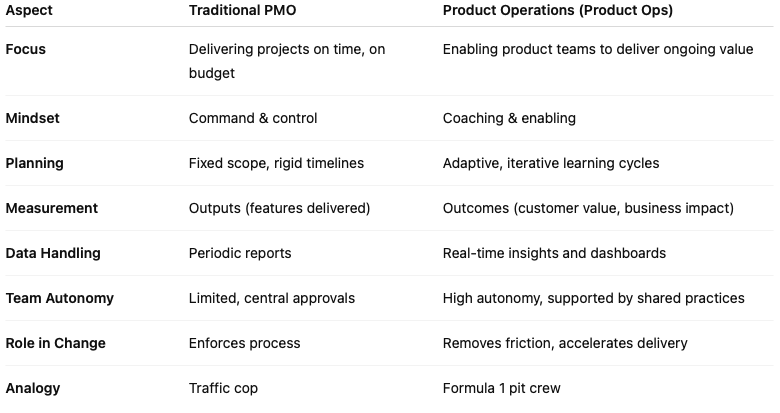Most roadmaps are wish lists with deadlines. I’ve seen smart, capable teams burn out trying to deliver every line item, only to discover no one wanted half the features. The problem? We’re still running product like projects, with layers of reporting and control, instead of creating an environment where teams can focus on learning and delivering value.
That’s where Product Operations comes in.
From PMO to Pit Crew
In big organisations, executives often lean on the Project Management Office (PMO) to bring structure and predictability. It works… until it doesn’t. PMOs were designed for projects with clear end dates. But modern digital products aren’t projects - they’re living, evolving ecosystems. Applying the same rigid controls just slows everything down.
Think of product ops as a Formula 1 pit crew. The drivers (your product managers and teams) are focused on the race - making bold moves to outpace competitors and deliver for customers. The pit crew (product ops) keeps the car in peak condition: fine-tuning processes, ensuring the right tools are available, and providing data-driven insights to help the driver make faster, smarter decisions.
When done well, product ops doesn’t add bureaucracy. It removes friction.
What Product Ops Actually Does
Atlassian describes product ops as a practice that makes product teams more efficient. I like to think of it as three big levers:
Insights on tap – Great product ops teams surface the right data at the right time. They build dashboards and reporting systems that give teams self-service access to customer behaviour and feedback. No more digging through 20 spreadsheets or waiting three weeks for BI to pull a report.
Smooth processes, fewer bottlenecks – They streamline workflows so teams can experiment, learn, and ship faster. It’s about removing red tape without losing alignment.
Tools and enablement – From roadmapping software to discovery toolkits, product ops sets up the garage and keeps it running so product managers can focus on strategy, not admin.
Marty Cagan (Silicon Valley Product Group) calls this a “force multiplier”. The idea is simple: a small team that makes every product manager more effective. Think coaches, not controllers.
Callout: PMO vs Product Ops
Common Mistake: Rebadging the PMO
I’ve seen organisations introduce “product ops” only to recreate the same old PMO. Suddenly there’s a new layer of reporting, approvals, and planning meetings… and product managers still can’t find time to talk to customers.
Real product ops is not a governance function. It doesn’t tell product teams what to do. It gives them space to focus on solving customer problems. It’s the difference between a race engineer helping you shave milliseconds off your lap time versus someone telling you which corner to brake at.
When to Invest in Product Ops
Not every company needs a dedicated product ops function straight away. Small startups can usually manage without it. But as soon as you have multiple teams or products, patterns emerge:
Product managers are bogged down in admin.
Experiments take too long to set up or repeat.
Data is scattered and hard to trust.
Scaling up feels like adding chaos, not speed.
That’s when a pit crew starts to make sense.
Making It Work
If you’re considering introducing product ops, start small.
Set clear goals – Decide what problem you’re trying to solve first: reporting, tools, insights, or process headaches.
Hire multipliers – Experienced product people who know how to coach and enable, not just manage spreadsheets.
Keep it lightweight – Don’t build a parallel product team or a PMO 2.0.
Focus on value – Every process or tool introduced should help teams make better decisions or ship value faster.
Product operations isn’t a silver bullet, but for organisations transitioning to true value-based delivery, it can be a game changer. Think of it less as adding structure and more as adding speed. Your pit crew won’t drive the car for you—but with them in your corner, you’ll make fewer pit stops, handle the corners better, and have a real shot at winning the race.






